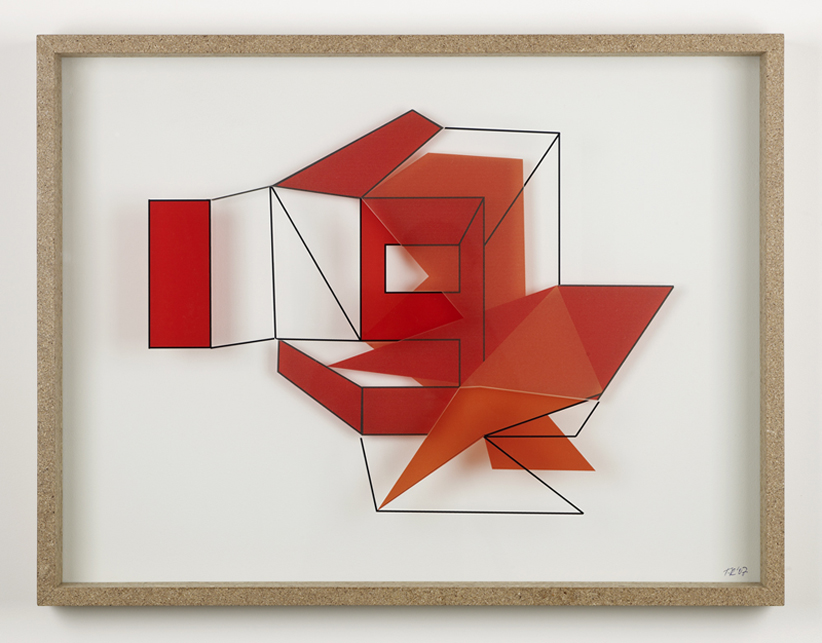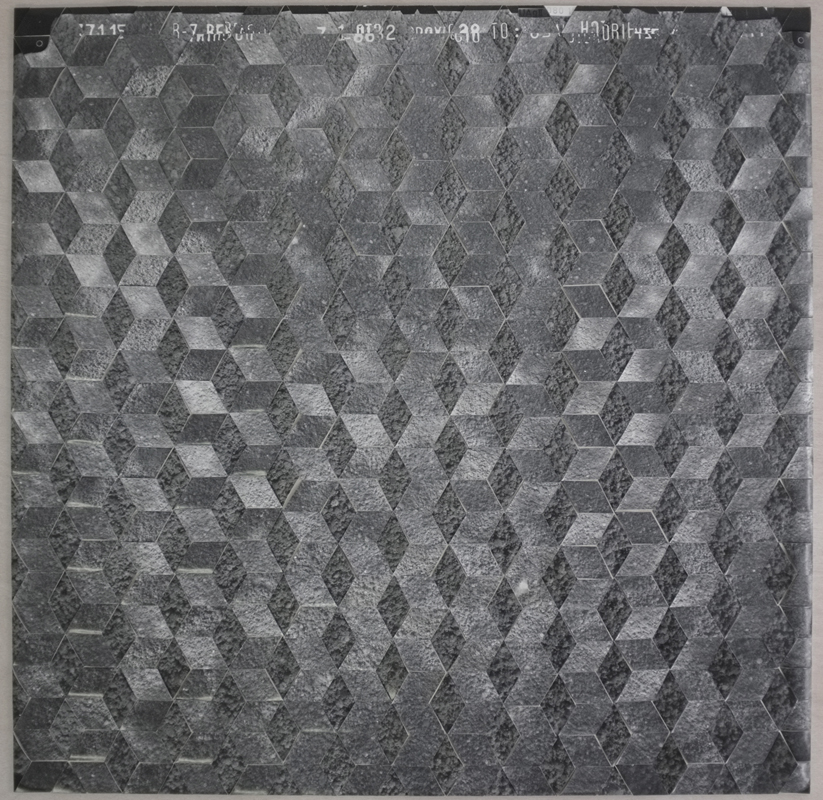
© » KADIST
Renee Rhodes
The artist writes about her work: “There is an endless desire to know what we look like from outer space and many of us have evolved into a species that exists across the disorienting spaces and timeframes of virtuality. Within my current work, dance and simple movement scores act as a language for simultaneously collecting, mapping and producing volumes of information and knowledge. Moving makes a map and performing is observation.

© » KADIST
Shaun O'Dell
The San Francisco–based artist Shaun O’Dell often uses natural settings as subject matter, lending an artistic complexity to the landscapes he depicts. Stereoscopic images are dual, slightly offset identical pictures that, when seen through a special viewing device, appear three-dimensional. In Temple Creek, a branch of Escalante River, Aquarius Plateau Utah n.d. (Stereoscopic view) (2011) O’Dell has chopped each of the two side-by-side images into 10 vertical strips and mixed them up, to construct a new image.

© » KADIST
Tobias Rehberger
Drawing & Print (Drawing & Print)
9’oclock (my time is not your time) pertains to a series consisting of three numbers: 5, 10 and 11 works were made for the exhibition “Signs and messages from modern life” at the Kate McGarry Gallery in 2007. The notion of time is a recurring theme in Tobias Rehberger’s work. We can recall the exhibition ‘Night Shift’ at the Palais de Tokyo ( Paris) in 2002 where the works could be seen only from the angle of the sun, exploring the relationship between day, night, and other natural cycles like the sun and moon, life and death.

© » KADIST
Rometti Costales
Drawing & Print (Drawing & Print)
The three cut-outs are made of three aerial photographs coming from the archives of the Ecuadorian Military Geographic Institute. These are views of the Amazon forest. The photographs are cut following an optical illusion pattern called “reversible cubes” or “tumbling blocks”, based on the Necker cube, a multistable object of psychophysics that is constantly switching perspectives.

© » KADIST
Barbara Bloom
In the 1980’s, while browsing Parisian fleamarkets, Barbara Bloom stumbled into an anonymous watercolor (dating to around 1960) in one of Paris’ fleamarkets, probably a study made by an interior designer for a bedroom. The artist found the image to be typically Parisian. The watercolor, framed under a mat made of cardboard, had color tests on its margin, elements that Bloom discovered when she raised it.

© » KADIST
Mark Grotjahn
Drawing & Print (Drawing & Print)
This particular drawing, like many of Grotjahn’s works, presents a decentered single-point perspective. Unlike the traditional vanishing point, the rays here emanate from the surface’s middle and hover around an indefinite and impossible convergence. The resulting fluttering of the image’s sections animates the drawing in relationship to its named subject, the butterfly.
Tobias Rehberger
A student of Martin Kippenberger, Tobias Rehberger emerged in the 1990s as one of the major artists of the younger generation in Germany and one of the most active on the international stage...
Barbara Bloom
Collector Barbara Bloom mixes autobiographical details, fictional narratives, and literary quotes...
Rometti Costales
Rometti Costales is an artistic collaboration between Julia Rometti and Victor Costales that began in 2007...
Renee Rhodes
Renée Rhodes grew up amidst the fantasy and rigor that is the world of classical ballet...
Mark Grotjahn
- location: Los Angeles, California
- year born: 1968
- gender: male
- nationality: American
- home town: Pasadena, California
-
1990-1999
Barbara Bloom
1997In the 1980’s, while browsing Parisian fleamarkets, Barbara Bloom stumbled into an anonymous watercolor (dating to around 1960) in one of Paris’ fleamarkets, probably a study made by an interior designer for a bedroom...
-
2000-2009
Mark Grotjahn
Drawing & Print
2002(Drawing & Print) This particular drawing, like many of Grotjahn’s works, presents a decentered single-point perspective...
Tobias Rehberger
Drawing & Print
2007(Drawing & Print) 9’oclock (my time is not your time) pertains to a series consisting of three numbers: 5, 10 and 11 works were made for the exhibition “Signs and messages from modern life” at the Kate McGarry Gallery in 2007...
-
2010-2019
Renee Rhodes
2011The artist writes about her work: “There is an endless desire to know what we look like from outer space and many of us have evolved into a species that exists across the disorienting spaces and timeframes of virtuality...
Shaun O'Dell
2011The San Francisco–based artist Shaun O’Dell often uses natural settings as subject matter, lending an artistic complexity to the landscapes he depicts...
Rometti Costales
Drawing & Print
2013(Drawing & Print) The three cut-outs are made of three aerial photographs coming from the archives of the Ecuadorian Military Geographic Institute...
